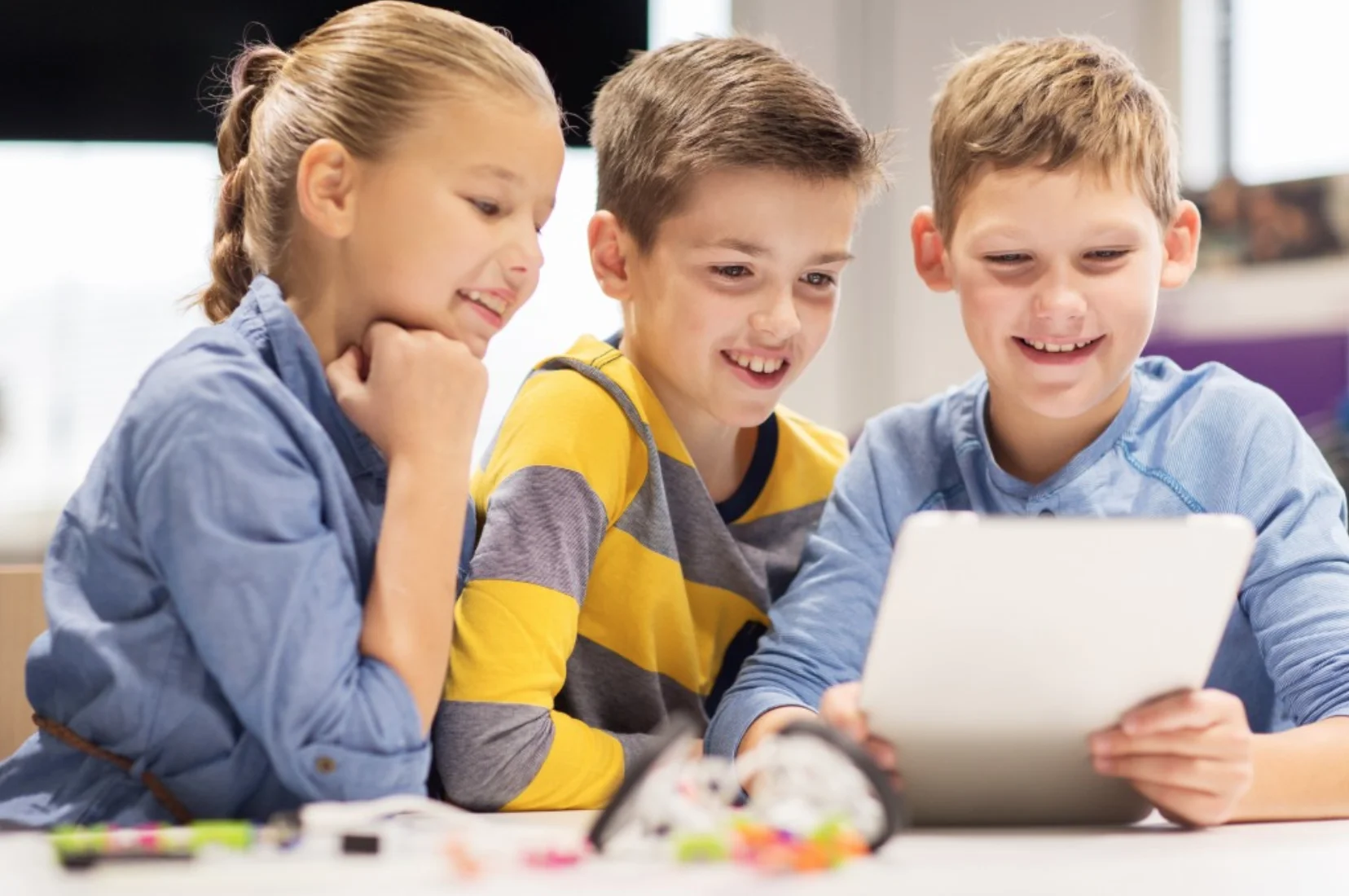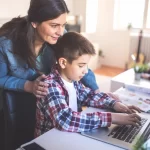
Screen Time – Educational Resources
We’re often bombarded with messages that kids are having ‘too much screen time’, and while there are certainly arguments to step away from the computer or TV occasionally, there are a plethora of wonderful learning activities online, too.
Here we will take a look at some of the brilliant resources available to kids of all ages, and explore some ways to incorporate healthy screen time into your child’s routine.
Active Screen Time
Every child needs downtime from academic learning; however, many fall into docile habits that incite unhealthy lifestyles later on.
While there is little argument against the fact that passive screen time can be detrimental to your child’s mental, physical and emotional wellbeing, studies undertaken by the Queensland University of Technology show that active screen time – that is, where kids have a physical or cognitive experience, can be beneficial.
Whether it be dancing, virtual sports or outdoor exploration, active video game platforms such as the Nintendo Switch, XBOX Kinect or Pokemon Go encourage physical activity. A 2016 study conducted by the Canadian Paediatric Society found that kids respond with greater enthusiasm to activity-based programming that is designed for their specific age group, is leisure-based and encourages participation.
While there are some fantastic apps and platforms available in stores and online, many interactive exercise videos for kids of various ages, such as Just Dance, are available on YouTube free of charge.
Alternatively, if your child is interested in exercising their brain, colourful and interactive language apps such as DuoLingo can easily be downloaded to a smart phone or tablet. For older kids, games that inspire critical thinking and problem solving are valuable to advancing cognition, and games such as Brain Training or the Professor Layton series are sure to help flex your child’s brain muscles and provide a sense of accomplishment along the way.
According to the University of Michigan, how children use technology is the strongest indication of the emotional or social problems that come with passive screen time. Therefore, finding useful resources such as those that encourage physical or cognitive activity are preferable to those that embolden passive screen scrolling and mindless programming.
Write More
Kids of the nineties (now likely the parents reading this blog) will remember the glorious typing program, Mavis Beacon Teaches Typing. The typing tutor program helped kids of all ages improve their typing efficiency and accuracy, leaving a lasting impression on its users decades on.
Today, there are countless free typing programs and mini games available online for children and teens that appeal to specific topics of interest, aesthetic preferences and areas of need. Some examples include: Typing Words: Sports; Top Row Typing: Upper Case Letters; and Typing Symbols with Squirrel.
Learning to type is not only a valuable skill for lifelong use, it also promotes a love of writing. Bolstering your child’s confidence in using the keyboard can lead to the exploration of their personal writing style. Does the child or student enjoy writing about a particular subject? Do they love creating exciting narratives with wild and wacky characters? Perhaps their newfound typing skills have led to a love of blog writing.
Whatever your child’s preference, learning to type is a skill that promotes cognitive activity and active screen time, and is a skill they will inevitably continue to use.
Co-viewing
Sometimes, parents and children just want to relax, and often this means sitting in front of a television. While this sounds like a problematic practise, turning this passive activity into an opportunity for educational viewing can have significant benefits.
Co-viewing is an activity enjoyed between kids and their parents, teachers, or friends, whereby the participants interact with one another throughout. Discussions during co-viewing periods are centred on what is being viewed, and can lead to far better language skills, according to research conducted by the University of Calgary Alberta, and Alberta Children’s Hospital Research Institute.
For the little ones, co-viewing television shows such as Daniel Tiger’s Neighbourhood promotes discussion around the social-emotional curriculum, supported through song, imagination and talking animals; while long-running kids’ programs like Postman Pat endorse discussion around a theme of community.
For bigger kids, old-time family programs such as 7th Heaven and Little House on the Prairie initiate conversation around everyday situations and ordeals, and urge viewers to consider how they would handle the situation.
Widely available and popular with families are documentaries such as those narrated by David Attenborough. The best part of co-viewing documentaries like Frozen Planet, The Life of Mammals and Great Barrier Reef is that information is both verbally and visually shared with the viewer, and leaves much room for discussion and wonder.
Preparing for school and beyond
Perhaps you are blessed with a naturally curious child that wants to learn more about the world around them. While libraries offer an abundance of resources, many parents find the trip to their local library arduous, just as most kids prefer the instant accessibility of their home Internet connection.
Author Bethany Koby suggests that supervised computer access can be highly beneficial to kids of school age, providing them with lifelong research skills and technological practises that are transferable to a variety of fields. She states that by learning how to use search engines effectively, children are able to develop their research skills and analyse the reliability of their findings.
Due to high demand, computer coding is rising in popularity and available to people of all ages, in a variety of modes. Through puzzles, games, in-app challenges and riddles, children can creatively learn a desirable skill while problem-solving and practising patience.
Examples of coding apps include: Lego Boost (7+), Cargo Bot (10+), Programing Hub (13+) and Grasshopper (15+).
Whether it be to promote a healthy lifestyle through exercise, or to kick-start your child’s creative writing flow, there are countless resources available online to parents and kids of all ages that support a healthy amount of screen time consumption.
References
Queensland University of Technology
https://www.ledevoir.com/documents/pdf/screen_time.pdf
Canadian Paediatric Society
https://www.cps.ca/en/documents/position/screen-time-and-young-children#ref39
University of Michigan
https://news.umich.edu/kids-and-screen-time-signs-your-child-might-be-addicted/
Alberta Research – Screen Time
https://jamanetwork.com/journals/jamapediatrics/article-abstract/2762864
Bethany Koby
https://www.theschoolrun.com/positive-screen-time







Leave a Reply